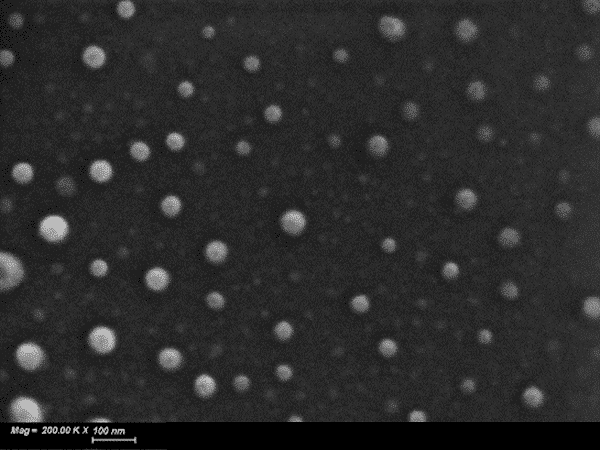
Cannabinoid-containing polymeric nanoparticles: synthesis and characterization
2Laboratory of Pharmaceutical Nanomaterials Science, Department of Materials Science and Engineering, Technion - Israel Institute of Technology, Israel
31Laboratory of Cancer Biology and Cannabinoid Research, Faculty of Biology, Technion - Israel Institute of Technology, Israel
Cannabidiol (CBD) is one of the major phytocannabinoids in Cannabis Sativa. Previous research has demonstrated CBD to possess anticonvulsant, anti-anxiety, neuroprotective and anti-inflammatory properties(1). It was also shown to have a high toxicity threshold(1). These qualities make it an ideal therapeutic candidate. CBD is well tolerated in humans and a few forms of CBD are currently available on the market.
Although CBD has promising clinical potential, its low aqueous solubility, instability and oily-resin nature raise hurdles toward the production of clinically relevant pharmaceutical formulations(2). The low aqueous solubility also limits its oral bioavailability(2). To overcome these limitations, in the current study, we investigated the nanoencapsulation of CBD within polyethylene glycol (PEG)-polycaprolactone (PCL) nanoparticles (NPs) as a delivery platform for oral administration.
To prepare CBD encapsulated NPs, PEG-PCL block copolymers were synthesized via a ring opening polymerization. The successful synthesis was confirmed by proton-nuclear magnetic resonance, Fourier transform-infrared spectroscopy, and gel permeation chromatography (Mw~ 20,000 g/mol, Mw/Mn ~ 1.8). Then, the CBD encapsulated NPs were produced by a homogenize-assisted nanoprecipitation process. The size and size distribution of the NPs were characterized by dynamic light scattering (DLS) at 25°C (Table 1). NPs showed one size population ~ 100% that suggested the successful encapsulation of the cargo.

Table 1. Properties of CBD-loaded nanoparticles (12%, 15% and 20% w/w), as characterized by DLS.
The size measured by nanoparticle tracking analysis and high-resolution scanning electron microscopy (HR-SEM) were in good agreement with DLS data. In addition, HR-SEM confirmed the spherical morphology of the NPs and the absence of CBD crystals (Figure 1). Ultra-high-performance liquid chromatography confirmed CBD loading at 12% w/w. Thermal analysis by differential scanning calorimetry confirmed CBD undergoes amorphization upon nanoencapsulation.

Figure 1. HR-SEM micrograph of CBD-loaded PEG-PCL nanoparticles.
The next steps will be the assessment of the NPs pharmacokinetics and the oral bioavailability of CBD in rodents.
Acknowledgements. This work was funded by the Russell Berrie Nanotechnology Institute of Technion-Israel Institute of Technology, Haifa, Israel.
1. R. Mechoulam, L. A. Parker, R. Gallily, J. Clin. Pharmacol. 42, 11S-19S (2002).
2. M. Durán - Lobato et al., J. Biomed. Nanotechnol. 10, 1–12 (2013).
.
Powered by Eventact EMS